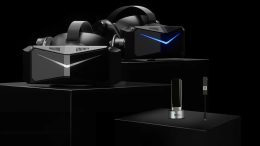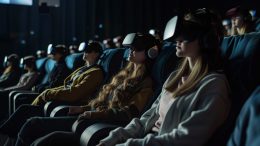Coupled with cloud platforms and Big Data analysis, IoT in Media and Entertainment industry provides a significant boost in utilizing their machine and human assets. IoT (Internet of things) refers to the ecosystem of connected smart devices and environmental sensors that track assets, across locations.
Without IoT, asset management solutions suffer from delays and errors in manual data collection. In addition, issues like under-utilization of assets, poor maintenance, and reporting may also hamper it. This loss translates to a lack of awareness of real-time consumer needs, poor utilization of assets, theft, and limited data. This helps to predict overall and personalized content consumption in the media and entertainment industry.
The role of IoT in the media and entertainment industry
The Media and Entertainment Industry can now make better-informed decisions by harvesting the multiple facets of consumer data. These include data such as location, time of day, parallel activities tied to consumption, age group, and region. As a result, they can develop more detailed consumer profiles that enable them to target ads and personalize content accordingly, providing higher degrees of satisfaction.
IoT in media and entertainment bridges the physical and digital world. In general, it enables Asset management through four layers:
- Data acquisition –
- Sensors help detect or measure parameters such as light, sound, temperature, humidity, pressure, biometrics, proximity, acceleration, and GPS.
- Smart devices act upon the sensor’s input or capture input by themselves – smartphones, wearables, smart TVs, gaming consoles, and home automation devices.
- Data consolidation – Gateways collect and consolidate data from sensors and smart devices and transfer them to cloud platforms using a higher bandwidth. They can communicate using multiple protocols such as cellular, Bluetooth, wi-fi, and Ethernet. They also serve as a security layer for the devices.
- Data hooks – IoT platform collects data from the gateways or devices and processes. It may also directly transfer data to applications on the cloud for further processing, analysis, and action. This ties it to cloud platforms and machine learning.
- Data visibility – Dashboarding and reporting to understand and utilize the insights to predict the future needs of content.
IoT use cases in media and entertainment
The meteoric rise in connected devices provides a massive opportunity for the Media industry. Consumers get to control what to watch and when to watch it. Meanwhile, the content providers gain rich insights into the consumer’s preferences. Some of the key areas where IoT has contributed to the industry along with overall asset management:
- Immersive content
- Personalized content
- Targeted advertising
- Asset Management
Unique streaming experiences with immersive content
Let’s take the example of the Entertainment industry in the gaming arena. Augmented reality with the aid of IoT devices such as smartphones, tablets, portable gaming consoles provides the highest form of immersive entertainment. AR integrates real-world elements with the virtual world by superimposing the virtual on the real.
A classic example of the initial showcasing of the power of IoT and AR is Pokemon GO. The game incorporates the real world through maps and smartphones, with fictional characters across the globe. It caused a stir among all age groups making them run all around town trying to gather Pokemon characters. This was in 2016.
Entertainment is going immersive today.
Today a number of the big brands are building an entire ecosystem around AR, Virtual Reality (VR), and IoT for entertainment. There’s Facebook’s AR Glasses, Microsoft’s Kinect as a motion-sensing add-on for XBOX 360, Amazon AR player, AR Emojis using a phone’s camera by Snapchat, Disney, and more.
Disney is coming up with some disruptive AR and IoT amalgamation to track and notify guests with helpful information on delays on rides. They also provide information on who the particular entertainment is for, depending on where they are in the park. In the future, Disney could come up with smart devices for some fantastic AR gamification experiences within the park.
Back to the mainstream world of TV, Smart TVs, streaming by OTT providers, and OTT platforms have revolutionized content watching from watching on a specific day at a particular time when the show is aired to binge-watching an entire series. Chrome casting is another new feature that enables you to watch uninterruptedly across devices, from your phone to your TV.
The future holds unique streaming experiences with immersive live events using IoT devices, VR headsets, AR glasses, and more to huge segmented crowds.
Personalized content with user persona and viewer data
With the increase in smart devices, content has mainly become digital. You could be on a walk, cycling with friends, exercising, driving your car back home. For instance, based on your location or activity, the music platform you listen to could provide you with upbeat, soothing, or party music. Wearable devices, mobile phones, tablets, and social media data that can be picked from a household pretty much provide a detailed map of the family’s composition, their preferences and needs, their friend circle, and more.
OTT providers such as Netflix already create multiple user profiles to engage with a family and not just an individual. Based on what you watch, what ratings you provide, through AI, they can figure out what kind of content you would like in the future and what kind of content demographic you fall within. Thus, content is personalized to the level of an individual in a family using the personas and viewer data.
Taking the social angle from the Facebook gaming world, Netflix came up with Teleparty to stream movies in sync with friends, each using their account and chatting. This was a big hit since group activities were not possible during the pandemic. This social data is something that Netflix, Disney, and others can further investigate group dynamics concerning content and advertising.
Targeted advertising with tailored campaigns
Earlier televisions would show ads to everyone without really knowing whether they could reach the target audience. So there was no way of filtering it out for whom it was not relevant.
Today thanks to digitally available content and OTT, Media and Entertainment companies can track consumers across devices.
Consuming content on devices such as smartphones, tablets, wearables, etc., also aids in providing additional information on users. This information includes their location, time of day, whether they are moving, exercising, or are stationary. In addition, through the multiple connected devices in a home, we can paint a picture of the family, which helps in targeting ads based on their specific needs.
Based on the data captured through wearables and other smart devices, we can now glean metrics on how many people saw a particular ad across devices and how many converted. Further, such detailed user information helps to tailor impactful campaigns and offers for highly effective revenue generation.
Nuances of IoT asset management solutions
Asset Management, in general, comprises of:
- Tracking moving assets – In the case of the Media and Entertainment industry, it could be electronic bracelets used by customers in an adventure park to enhance the experience.
- Monitoring – Monitoring the health of an asset such as a setup box, checking if it’s connected to wi-fi, whether it has a technical error, and racking the usage.
- Workflow Automation – Use a voice-activated assistant to switch on/off an asset, decrease or increase the volume of a music system or TV, cast what you are watching on the phone to a TV.
- Maintenance – Based on the tracking and monitoring of assets, predictive maintenance. For example, detect technical faults in the asset using IoT devices such as a Home assistant and proactively notify the customer for maintenance.
- Security – At the company’s end, the digital assets need to be secured with authentication and role-based authorization to access, collaborate and add content. At the end-consumer end, assets need to be secure to prevent hacking into sensitive personal information.
Using IoT, Mobile, Chatbot, and Artificial Intelligence (AI), Entertainment companies can provide the best customer service. This is very evident at the end customer level. For example, a setup box is free with a particular TV connection. Earlier, the provider needed to send a person to set it up completely. Today, with the aid of a chatbot on their website or app, a customer can set it up themselves. Besides, the setup box is intelligent enough to check the network connectivity and notify the viewer.
Improving accessibility and customer experience
Similarly, when there is a technical issue or a bill not paid, the provider can send messages to the customer. This can be viewed either on the home screen of the TV or the customer’s mobile app or phone. Even for a technical issue, the customer can get onto the app and start the diagnostics with the chatbot.
This saves valuable time for the customer support team, which can then focus on more significant problems. It can also help have a smaller, highly skilled support team as the smart devices are connected and work things out with minimal human intervention.
Enabling next-gen devices with IoT in media and entertainment
Digital Home Service (DHS) is a cloud-based Oracle solution for set-top-box and service-intensive pay-TV operators. It combines Oracle IoT, mobile, chatbot, AI, and Oracle cloud platform with modern digital customer management. And, deliver the next generation of digital home service capabilities. This helps to reduce the effort and improve the efficiency of customer service and field services teams.
IoT is the crux of all smart devices today: smart TVs, gaming consoles, music systems, or air conditioning. They interact easily with voice-activated Smart Home devices such as Alexa, Google Assistant, Roomie Remote. Switching on/off, searching for content, and more can be done by just one assistant that manages all our smart devices.
The future of connected devices and IoT in media and entertainment
Another critical facet is content security. Data and devices surround everyone, including children. There are many ways to bring in parental control both on devices and platforms. This helps to ensure that children see age-appropriate content. Each IoT device and asset collects data, be it your security camera, fridge, or Amazon Echo. This makes them potential threats to privacy and overall security from cybercriminals.
They can hack into your devices, monitor your activities, steal data both digital and physical, depending on how you have addressed your home’s security. Therefore securing the IoT environment at home is essential. We are slowly moving towards biometric security instead of using not-so-secure and multiple passwords.
IoT Asset Management solutions, therefore, bring endless possibilities to take Media and Entertainment to unimaginable heights. It serves as a powerful predictive monitoring tool that helps with asset maintenance and gives deep insights into the end consumer. Every day there are newer and better IoT devices in the market. Therefore, a Media and Entertainment house would do well to invest in an intelligent IoT framework early on.
Image Credit: Andrea Piacquadio; Pexels; Thank you!










